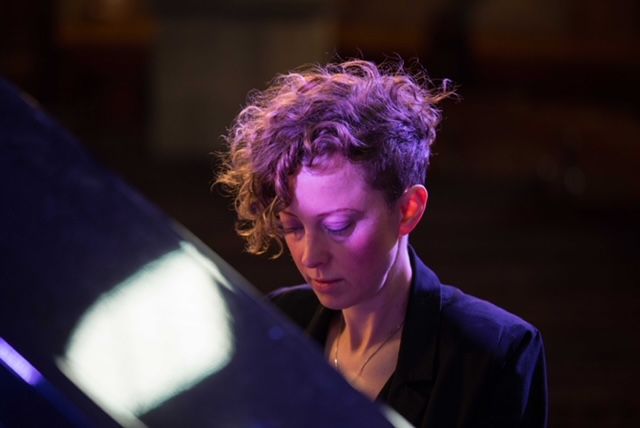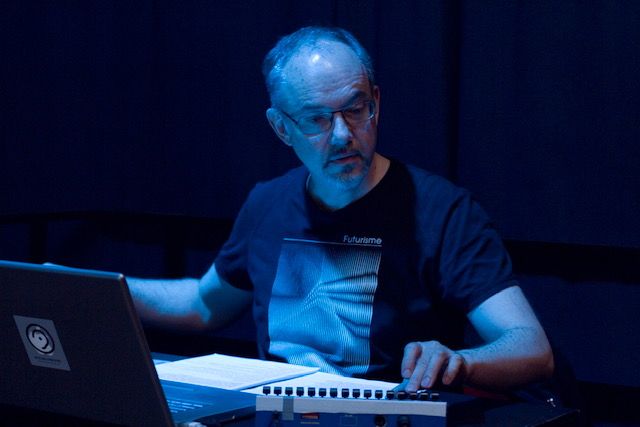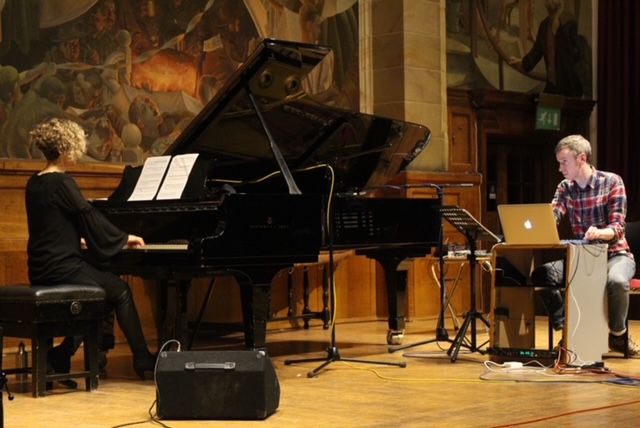Gold.Berg.Werk: J. S. Bach & Karlheinz Essl
No matter how many Goldbergs you have inyour collection, this is a must-have supplement.

This is an amazing re-interpretation of the Bach Goldberg Variations. We hear the entire work performed by Xenia Pestova Bennett, but interspersed with electronic "diffusion" movements composed by Austrian composer Karlheinz Essl in response to Bach's masterpiece.
We start from this, of course, Bach's "Aria":
Essl responds to Bach's Aria with one of his own, "Aria Electronica" - we clearly hear echoes of the muscial material, suspensions and so on - but as if from a distance, as if in a dream. Bach's harmonies are time-stretched and manipulated in real time and played back through spatialised loudspeakers in between the Bach variations. Here's that "Aria Electronica":
As pianist Xenia Pestova Bennett puts it, this takes the piece away from the idea of a "fixed artifact" and enables it to appear as a "living and evolving organism" - "a new piece in its own right".

I remember listening to contemporary music for an extended period with a (Baroque-orientated) friend at University once - when we played some Bach, she commented it was like a veil was lifted. There's something of that here - when Bach returns from his contemporary electronic adventures, there's a clarity that is somehow appreciated all the more by the listener.
Bach's piece therefore becomes a "Gold Mine," a launchpad for Esel's imagination. The recording also exists as a binaural download which is much recommended - the electronica becomes a truly immersive experience.
Here's an extended lecture on the piece by the performer, Xenia Pestova Bennett:
Karlheinz Essl (born 1960) studied with Friedrich Cerha (he who completed the third act of Berg's opera Lulu and is a noted composer in his own right) at the Vienna Musikhochschule and electro-acoustic music with Dieter Kaufmann.

The musical tripartite marriage (!) of Bach with Pestova Bennett and Essl made in heaven - Pestova Bennett works with contemporary composers often, but also is able to present Bach's textures in pellucid terms. Her ornamentation is supremely judged, and she fully exploits the capabilities of the modern piano while remaining true to Baroque performance practice. Essl's re-interpretation dates back to the beginning of this Millennium and his connection with the Orpheus Trio Vienna - here's a film about that event:
In the present recording, the piano itself is used as projector of the electronic sounds (a transducer is placed onto the resonance board, so that the sounds emerge as a property of the instrument itself). In addition, a live spatialisation is effected by moving the sounds between te transducer inside the piano and a second ("lontano") loudspeaker, far away from te piano, enabling the sound to appear near or far by design - this aspect was effected by composer Ed Bennett.
The achievement is that the shape of Bach's masterpiece is retained, and in a sense amplified. The trajectory of the piece leads back to a final statement of the Aria - but of course we can necer experience it as we did at the beginning. That sense of transfigured return is underlined here, just as the Baroque gravitas of the"Overtura alla Francesca" at the work's midpoint is doubly emphasised by the four-minute "Ars Electronica II" that precedes it:
The "dance" between Baroque is hypnotic and fascinating - particularly so as it just feels so "right" because Essl's responses emerge from, and return to, the source.

The performance of the Bach was recorded at the University of Belfast in September 2020, while the electronic movements were rendered in Vienna in August of that year.
At only £7.99 at Amazon, this is a wonderful buy! No matter how many Goldbergs you have in your collection, this is a must-have supplement. It's possible you'll never hear them in the same way again.
